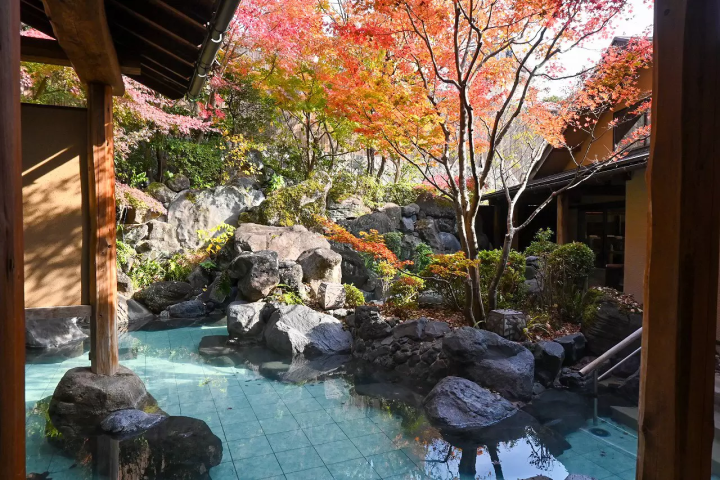Tokyo Festivals: 2025 Dates of the Top 10 Traditional Events

From spring to autumn, there are various matsuri (traditional festivals) in Tokyo. Read on to learn about the most famous festivals in Tokyo in 2025, including their backstory, dates, and highlights.
Enjoy Tokyo's Famous Festivals in 2025
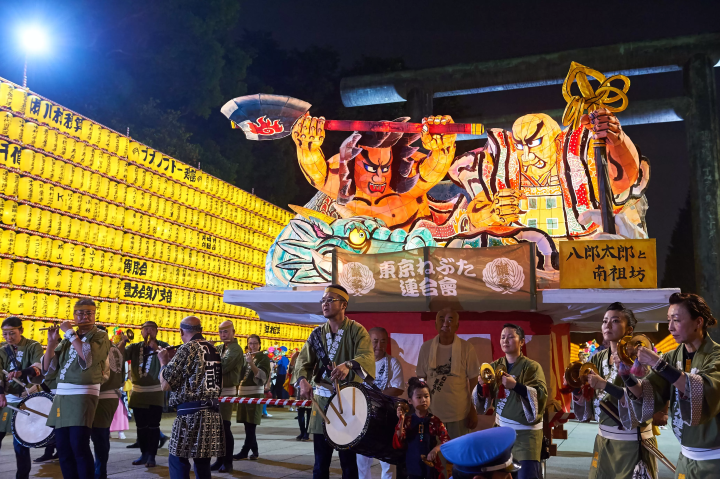
Mitama Matsuri. Picture courtesy of PR Times
Traditional festivals known as matsuri are held from spring to autumn all around Japan. Many of these events are related to local shrines and have been regularly held for decades or centuries, becoming an essential feature of local communities.
This article introduces 10 famous traditional Japanese festivals held in Tokyo. From festivals with food stalls to lively festivals with portable shrines parading through the streets, there is something for everyone!
Tokyo's Best Festivals in 2025
1. Kanda Matsuri (May)
2. Sanno Matsuri (June)
3. Sanja Matsuri (May)
4. Hachioji Matsuri (August)
5. Mitama Matsuri (July)
6. Kagurazaka Matsuri (July)
7. Azabu Juban Noryo Matsuri (August)
8. Fukagawa Hachiman Matsuri (August)
9. Tori no Ichi (November)
10. Kurayami Matsuri (April and May)
1. Kanda Matsuri Festival
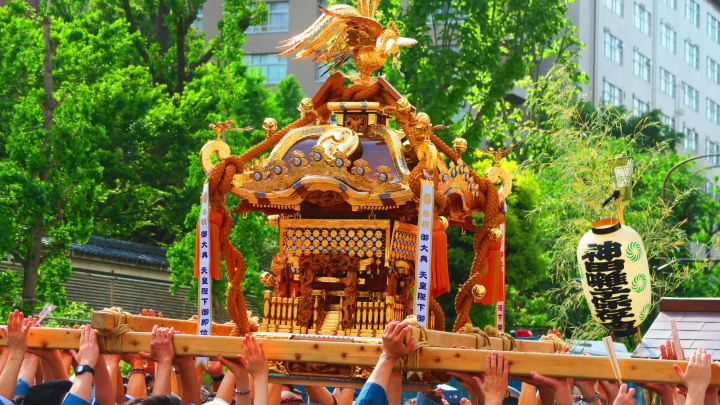
Photo by Pixta
Kanda Matsuri is a festival hosted by Kanda Myojin, a shrine located near Akihabara. It is also one of the three major festivals in Japan. During the Edo Period (1603-1868), it was one of the three major festivals in Edo (present-day Tokyo), protected by the Tokugawa shogunate. About 300,000 spectators gather at the current festivities, making it one of the largest events in Tokyo.
Two portable shrines called mikoshi and 45 floats parade the streets of Kanda district. Even the home appliance stores in Akihabara join in on the festivities. There will be stalls along the approach to the shrine, where visitors can enjoy Japanese delicacies, along with pop culture items from Akiba.
In 2025, the main parade of Kanda Matsuri will be held on May 10.
2. Sanno Matsuri Festival
Sanno Matsuri is a festival hosted by Hie Shrine. It is the top event among the three major festivals in Edo and is held alternately with the Kanda Matsuri every other year.
Shinko Gyoretsu, a procession where a group of ujiko (*1) dressed in ancient aristocratic attire, starts from Hie Jinja and heads to Nihonbashi and Ginza, passing by the National Theater and the Sakashita Gate of the Imperial Palace. A Bon dance is also held at Tameike-Sanno Station, which draws a large number of participants.
While there are no food stalls at this festival, those following the procession can stop by eateries along the route.
*1: Residents who worship the guardian deity of the area and participate in the activities hosted by the shrine.
The Sanno Matsuri will not be held in 2025. For details, please check the official website (Japanese).
3. Sanja Matsuri Festival

© Tokyo Convention & Visitors Bureau
Sanja Matsuri, hosted by Asakusa Shrine in Taito City, is a signature event in the early summer days. Also called Sanja, the event is very popular, with 100 portable shrines gathering in Asakusa on the festival's second day.
There are many food stalls at Sanja Matsuri, which are also popular among overseas visitors. While the main area is Nakamise-dori, with stalls cropping up nearby, Asakusa will be really bustling with visitors.
Sanja Matsuri is set to take place from the 16th to 18th of May 2025.
For details, please check the official website of Asakusa Shrine.
Read also
4. Hachioji Matsuri Festival
Hachioji Matsuri, known for its number of floats called dashi, is one of the major festivals in the Kanto region. The sight of 19 floats divided into two groups and parading in the area is truly impressive.
In recent years, floats with puppets, a popular style in the early days of the festival dating back to the Edo Period, have become trendy again.
Visitors should not miss "buttsuke," a duel of festival music set up close to each other by two floats. Food stalls will be set up along Koshu Kaido, adding to the festive mood.
Hachioji Matsuri will be held from August 1 (Friday) to August 3 (Sunday), 2025. For details, please check its official website (Japanese).
5. Mitama Festival
Mitama Matsuri, hosted by Yasukuni Shrine, started in 1947. Since fallen soldiers of WWII are enshrined at Yasukuni, the event honors them with a large number of votive lanterns on the grounds.
During the four days of the festival, there will be kappore (a street performance that originated in the Edo Period), marching bands, the Awa dance, and the Nebuta float parade from Aomori. Also, nighttime visitors will be allowed to enter the courtyard, a normally restricted area.
While there are no food stalls, the event features a few food trucks.
Mitama Matsuri is scheduled to be held from July 13 to 16, 2025. For details, please check the official website of Yasukuni Shrine.
6. Kagurazaka Festival
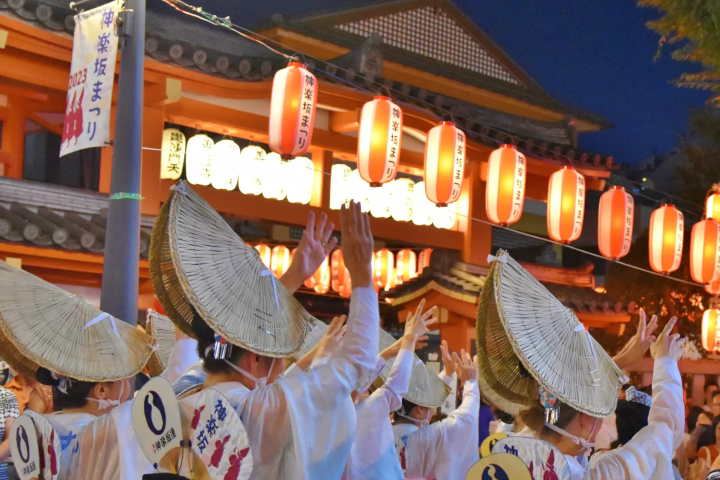
Photo by Pixta
Kagurazaka Matsuri is held annually in the Kagurazaka district in Shinjuku.
This district, which has a long history as an amusement area, will be the stage for the Awa dance and hozuki market (*2). A moxibustion treatment called houroku-kyu will be offered at Bishamonten Zenkoku-ji, a temple in the middle area of Kagurazaka.
Kagurazaka eateries will be opening stalls along the streets so visitors can casually enjoy their dishes.
*2: The market handles pots of hozuki (husk tomato), a plant used as medicine, and hosts children's games as well.
Kagurazaka Matsuri is scheduled to be held from July 24 to 26, 2025. For details, please check the official website of Kagurazaka-dori Shopping Street.
Read also
7. Azabu Juban Noryo Matsuri Festival
Azabu Juban Noryo Matsuri is a lively festival held in the Azabu Juban district in Minato City. The local stores are the organizers, and eateries will set up food stalls.
While the district is usually quiet, with many stores handling luxury brands, it becomes lively during the event. Embassies located in nearby areas will also set up stalls, creating an international atmosphere.
Azabu Juban Noryo Matsuri was held from August 24 to 25, 2025. For details, please check the official website.
8. Fukagawa Hachiman Festival
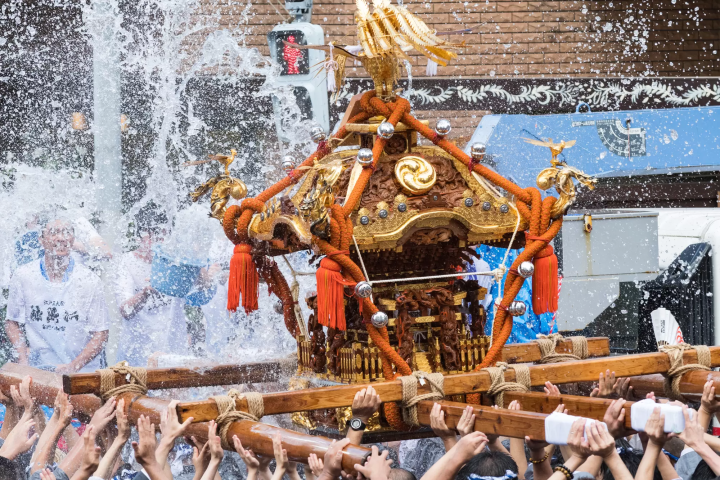
Photo by Pixta
Fukagawa Hachiman Matsuri, an event hosted by Tomioka Hachiman Shrine, was one of the three major festivals in Edo, along with Kanda Matsuri and Sanno Matsuri. It started in the Edo Period to pray for the healthy growth of Tokugawa Ietsuna, who was destined to be a shogun.
This event is also called the mizu-kake matsuri (water throwing festival) with water splashing on the mikoshi, which parades near Kiba Park and Kiyosumi Garden.
Over 20,000 people participate in the festival, which draws about 500,000 spectators. Food stalls will be set up not only on the shrine grounds but also in the surrounding areas. This is an ideal opportunity to enjoy festival cuisine.
Fukagawa Hachiman Matsuri is scheduled to be held in mid-August of 2025. For details, please check the official website of Tomioka Hachiman Shrine (Japanese).
9. Tori no Ichi Festival
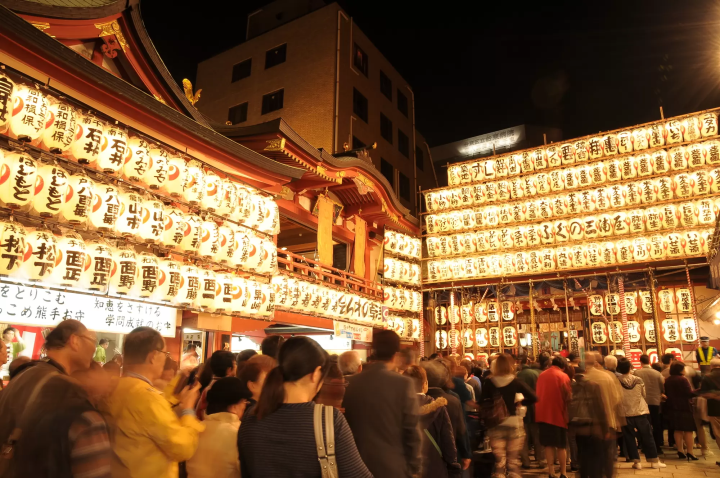
Photo by Pixta
Tori no Ichi, held annually across Japan in November, is a festival to pray for good business.
In Tokyo, Ohtori Jinja in Asakusa is well known for this event, with a long history dating back to the Edo Period. Tori no Ichi will also be held at Hanazono Shrine in Shinjuku City, Ohtori Shrine in Adachi City, and Ohkunitama Shrine in Fuchu City.
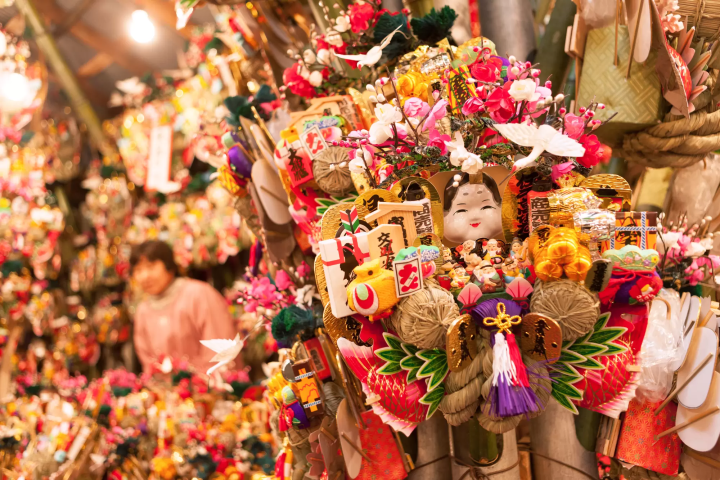
Kumade (ornamental rakes). Photo by Pixta
Kumade, which can be purchased at Tori no Ichi, is a talisman to pray for prosperity in business and happiness in the coming year. It is said that people should buy a kumade that is larger than the one bought last year.
Tori no Ichi will be held two or three times every year in November. It depends on the number of tori (rooster) days, according to Chinese zodiac calendar, which changes annually.
In 2025, the Tori no Ichi will take place on November 12 and 24. For details, please check the official website of Ohtori Shrine.
10. Kurayami Matsuri
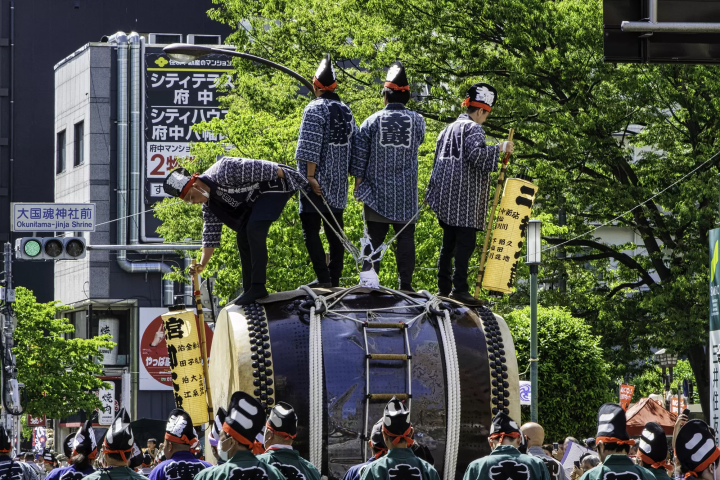
Photo by Pixta
Ohkunitama Shrine, located in Fuchu, hosts the Kurayami Matsuri in addition to the Tori no Ichi.
The shrine used to be the so-chinju (*3) of Musashi Province (*4). Kokufu (provincial office) was located where Fuchu now stands, and the kokushi (governor) was ordered to present swift horses to the Imperial Court.
Kurayami Matsuri started as a race to select such a horse. It has a history of over 1,000 years, and the night race is the highlight of the event.
*3: A shrine designated as a guardian deity of the area.
*4: An area that stretches from Saitama through Tokyo to Kawasaki and Yokohama.
Kurayami Matsuri was held from April 30 to May 6, 2025.
For details, please check the official website of Ohkunitama Shrine. (Japanese)
FAQ
What is the most famous festival in Tokyo?
One of the most famous and iconic festivals in Tokyo is the Kanda Matsuri. Held biennially in mid-May at Kanda Myojin Shrine, this grand festival is renowned for its vibrant procession of over 200 portable shrines known as "mikoshi," traditional music and dance performances, and lively festivities that honor the shrine's patron deity. The Kanda Matsuri offers a captivating display of Tokyo's cultural heritage, history, and traditional celebrations, attracting locals and tourists alike to experience the spirited atmosphere and dynamic traditions of this significant festival in the heart of the city.
What are the big three festivals in Japan?
The "Three Great Festivals of Japan," including Gion Matsuri in Kyoto, Tenjin Matsuri in Osaka, and Kanda Matsuri in Tokyo, stand out as the most renowned and culturally significant festivals in the country. Gion Matsuri, held in July in Kyoto, showcases ornate floats, traditional performances, and processions that capture the essence of Kyoto's heritage. Tenjin Matsuri, a lively festival in late July in Osaka, honors the deity Tenmangu with boat processions, fireworks, and ceremonies. Kanda Matsuri, occurring biennially in mid-May in Tokyo, features a grand parade of portable shrines, music, and dancing, embodying the vibrant and historical traditions of Tokyo's cultural tapestry. These festivals symbolize Japan's rich cultural legacy, drawing crowds to partake in the exuberant celebrations and rituals that define the essence of Japanese festival culture.
What is matsuri in Japan?
"Matsuri" in Japan refers to traditional festivals celebrating various aspects of Japanese culture, history, and spirituality. Matsuri are vibrant and colorful events that take place throughout the year, often held at shrines, temples, or in local communities. These festivals feature a mix of religious rites, performances, processions, food stalls, and entertainment, creating a lively and festive atmosphere. Matsuri are an integral part of Japanese cultural heritage, showcasing the country's traditions, music, dance, and arts while bringing communities together to celebrate and honor local deities, historical events, or seasonal festivities. Each Matsuri is unique, reflecting regional customs and beliefs, and offering participants and spectators a chance to experience the rich tapestry of Japanese culture in a celebratory setting.
What month is best for festivals in Japan?
The best month for festivals in Japan varies depending on the season and the type of festivals one desires to experience. Spring (March to May) features cherry blossom festivals like hanami and traditional events such as the Sanja Matsuri in Tokyo. Summer (June to August) brings vibrant festivals like Gion Matsuri and Nebuta Matsuri known for colorful processions and street performances. Autumn (September to November) offers events like the Jidai Matsuri in Kyoto and cultural celebrations across Japan. Winter (December to February) showcases festivals like the Chichibu Night Festival and the Sapporo Snow Festival with ice sculptures and illuminations. Each season presents its own unique cultural experiences and celebrations, catering to a diverse range of interests and offering an opportunity to immerse oneself in the rich tapestry of Japanese festivals throughout the year.
What are Tokyo's big three festivals?
Tokyo's "big three" festivals encompass the Sanja Matsuri in May at Asakusa Shrine, a vibrant celebration featuring processions, traditional music, and mikoshi parades. The biennial Kanda Matsuri in mid-May at Kanda Myojin Shrine showcases over 200 portable shrines, traditional performances, and ceremonial rites honoring the shrine's patron deity. Additionally, the Sanno Matsuri, held in even-numbered years in mid-June at Hie Shrine, is a significant Shinto festival with colorful processions, traditional rituals, and performances that honor the shrine's guardian deity and promote peace and prosperity in Tokyo. These festivals highlight Tokyo's cultural heritage, traditions, and community spirit, attracting locals and visitors alike to partake in the festive atmosphere and celebrations.
Enjoy a Festival in Tokyo
Various festivals are held in Tokyo. They are rich in history and tradition, as some started over 1,000 years ago and are related to the Tokugawa shogunate.
Well-known events draw a vast number of domestic and international spectators, adding a lively atmosphere to the area.
Enjoy these festivities along with their food stalls!
Read also
Main image courtesy of PR Times


















































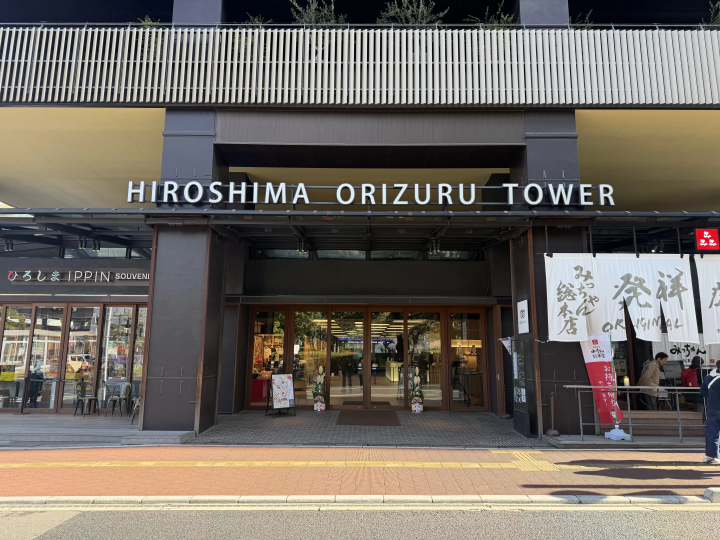
![[Coupons available] We're open even during the New Year holidays! We'll bring you information on our New Year's sale!](https://resources.matcha-jp.com/resize/720x2000/2025/12/26-254137.webp)
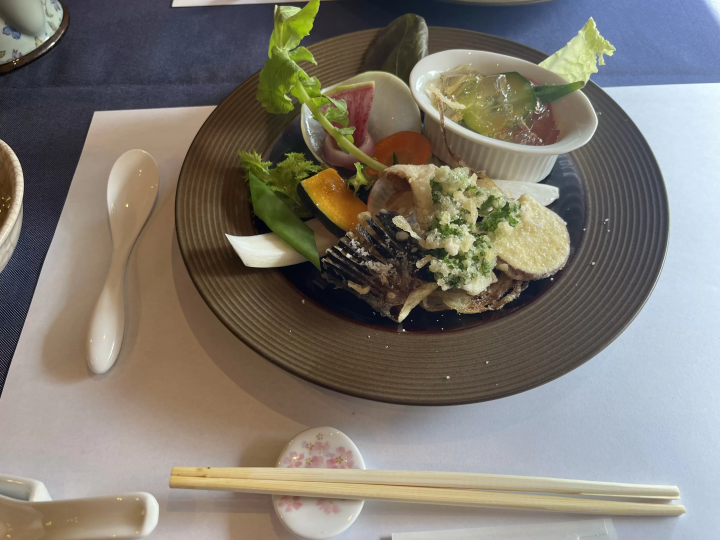
![[For beginners and debutants] Special feature on recommended ski resorts and ski tours!](https://resources.matcha-jp.com/resize/720x2000/2025/12/26-254120.webp)
